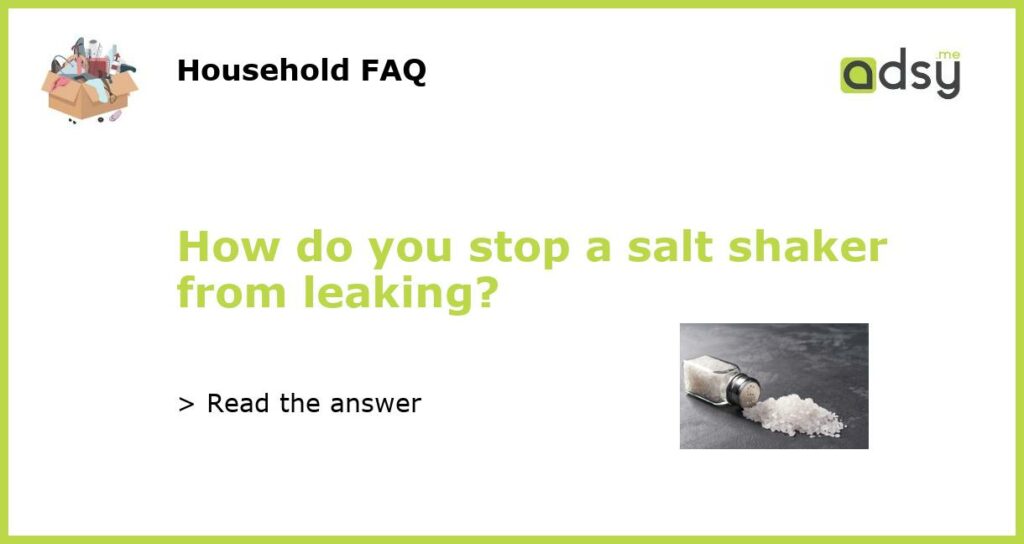Understanding the Common Causes of Salt Shaker Leaks
Salt shaker leaks can be quite frustrating, but before we dive into how to stop them, it’s important to understand the common causes. The most common reason for a salt shaker to leak is moisture. When moisture enters the salt shaker, it can clump the salt, causing it to clog or stick together. As a result, when you turn the shaker upside down, the clumped salt might not flow freely, leading to leaks.
Another common cause of salt shaker leaks is a faulty or worn-out shaker cap. Over time, the cap may become loose or worn, allowing salt to escape through the gaps. Furthermore, the design of the shaker itself can also contribute to leaks. Some shakers may have larger holes or poor seal mechanisms, causing salt to spill out unintentionally.
Preventing Leaks by Properly Storing Your Salt Shakers
The first step to stopping salt shaker leaks is to ensure proper storage. Moisture is the primary culprit behind clogged salt shakers, so it’s crucial to keep your salt, and the shaker itself, dry. Store salt in an airtight container or in a cool, dry place. Avoid placing it near the sink or in a humid environment, as moisture can easily find its way into the shaker and cause clumping.
Similarly, when not in use, make sure to keep the salt shaker in a dry area. If you’re using a table salt shaker, consider investing in a salt cellar or a salt pig with a lid. These containers provide better protection against moisture and can help prevent leaks. Additionally, using a salt grinder instead of a shaker can also minimize moisture-related issues.
Fixing Leaks from the Shaker Cap
If your salt shaker is leaking due to a faulty or worn-out cap, there are a few solutions you can try. First, check if the cap is tightly screwed onto the shaker. Sometimes, a loose cap can cause salt to spill out. Give it a tight twist to ensure a snug fit.
If the cap is damaged or loose, and tightening it doesn’t fix the issue, you may need to replace it. Look for a replacement cap that is designed specifically for your salt shaker model. This will ensure a proper fit and prevent future leaks. Many kitchen supply stores or online retailers offer replacement caps for various salt shakers.
Using Adhesive Seals or Wax to Prevent Leaks
If you’ve tried tightening or replacing the cap and you’re still experiencing leaks, you can try using adhesive seals or wax to create a better seal. Silicone adhesive seals or food-safe epoxy can be used to seal the gaps between the cap and the shaker. Apply a thin layer around the rim of the shaker and attach the cap firmly. Allow the adhesive to dry according to the manufacturer’s instructions. This method can be effective in preventing leaks, but it may require periodic reapplication.
Alternatively, you can use food-grade wax to create a seal. Apply a small amount of melted wax around the rim of the shaker, ensuring that it covers any gaps. Allow the wax to cool and harden before using the shaker. This method may provide a temporary solution and may need to be reapplied over time.
Consider Upgrading to a Leak-Proof Salt Shaker Design
If you find that your salt shaker continues to leak despite your efforts, it may be time to invest in a leak-proof design. Look for salt shakers that have a reliable seal mechanism, such as a silicone gasket or a threaded cap. These designs are specifically engineered to prevent leaks and maintain the freshness of your salt.
There are many leak-proof salt shakers available on the market, ranging from simple designs to more innovative options. Read reviews or seek recommendations to find a shaker that is known for its excellent leak-proof performance. Investing in a high-quality salt shaker may save you the frustration of dealing with leaks in the long run.






